Items
keywords is exactly
children
-
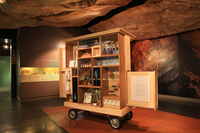
Chest: a botanical ecology
Illness and disease affect us all. The treatment of these conditions however, has been vast and varied, depending on the historical periods and the cultural context in and during which they are practiced. Situated in the rock art gallery, where healing power is expressed in San paintings, this mobile set of cabinets explores a rich complex of healing practices through the display of a medicine chest which was donated to the university of Cape Town in 1978. This chest belonged to a British dentist, who practiced in Cape Town from 1904, and who bought the chest for a hunting trip he undertook in 1913 to (then) Northern Rhodesia. The idea of the chest then gives rise to a variety of forms of healing: from instruments used to exorcise evil spirits and children's letters written to celebrate a heart transplant; to medicinal flowers bought at the Adderley Street flower market. The exhibition aims to visualise and materialise illness and its treatment from historical, cultural and disciplinary perspectives. Drawing on well-established historical and contemporary connections between the disciplines of Botany, Medicine and Pharmacology, the exhibits also suggest latent links which are at times political, at times whimsical. -
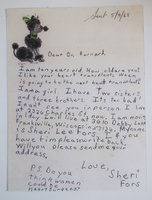
'Do you think women could be heartsurgens?'
Dear Dr Barnard, I am ten years old. How old are you? I like your heart transplants. When is going to be the next heart transplant? I am a girl. I have two sisters and three brothers. Its too bad I can't see you in person. I live at 2326 Charles St. now. I am moving in 1 day. I will live at 3610 Denny Lane, Franksville, Wisconsin. My name is Sheri Lee Fors. If you have time please write back. Will you please send me your address. Love, Sheri Fors. P.S. Do you think women could be heartsurgens? -
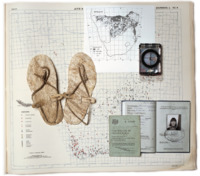
Page 175 of the Curiosity CLXXV catalogue
"The page presents a curated collection of images: a map from the Avian Demography Unit illustrating the distribution of the bataleur Terathopius ecaudatus along the political border, though the bateleur is more frequently found where there is no formal farming; a Ngwato child’s oxhide sandals collected by Isaac Schapera (a British social anthropologist who worked in South Africa and Botswana); a compass; the identification documents of Paula Ensor (previous dean and Professor of Education), who spent time in exile in Botswana; and a Certificate of Registration necessary for movement across borders, all of which are overlaid on top of a large map from the Afrikaans Atlas provided by Rajend Mesthrie of the Department of Linguistics and Southern African Languages that shows the Afrikaans language’s distribution. Contextualising all of these objects in relation to the large map cuts across disciplinary boundaries and illustrates the scope and impact of the colonial and apartheid regimes and their influence on immigration laws, language studies, ornithology and anthropology" (Liebenberg 2021: 193). -
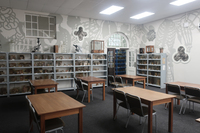
Subtle Thresholds (PLC)
"Integrated into the PLC, these works speak to the specimens on display and provide interesting access points to the collection. The animal-faeces prints (which referenced ‘sites of contamination’ in the context of the SAM exhibition) resonate, for instance, with many of the specimens on display in the PLC, such as the heterotopic heart (also called a ‘piggy-back heart transplant’) created by Dr Chris Barnard in 1977, consisting of a baboon heart grafted onto a human heart for additional motoric support. In addition to their more ‘famous’ specimens, the centre also has an extensive intestinal worm collection and many organs affected by zoonotic diseases, such as a liver ravaged by malaria. This was not a conscious decision on the part of the artist-curator and illustrates how curation can draw attention to aspects of a collection and liberate new associations when brought into conversation with it" (Liebenberg 2021: 201). -
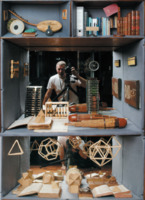
Page 135 of the Curiosity CLXXV catalogue
"Peering into one of them could, for instance, reveal musical instruments from the South African College of Music’s Kirby collection; old wooden mathematical models of abaci and polyhedrons from the Maths department; mobiles demonstrating platonic solids made by mechanical engineering students; publications by a UCT Professor of Astronomy; a sign pointing to ward D10 from the old section of Groote Schuur Hospital; glass slides once used as a teaching aid for art history at Michaelis; bird ringing material from the Avian Demography unit; and a bottle-brush plant labelled by the son of one of the curators" (Liebenberg 2021: 179). -

A display on page 97 of the Curiosity CLXXV catalogue
"A stainless-steel dilator from the Drennan collection, a carded set of glass slides of xenopus heart sections from the Medical Microbiology collection, a 19th century game called 'Frogs and Toads' from Special Collections and a wax model of an embryo, also from Drennan. This ‘amphibian’-inspired display showcases many qualities of the curatorial method, such as visual quotation (the combination of these materials foregrounds that the shape of the dilator resembles a frog), analogy (the wax embryo, dilator and frogs allude to the resemblance between sperm and tadpoles) and juxtaposition (the frog as a scientific topic dissected and contained in the slides, and the frog as a board piece in a game played by children)" (Liebenberg 2021: 183). -

Whalesharks (Fact/Fiction)
"With a crowd of pilot fish he prowled around the raft, and went on doing this for so long that that we plucked up courage. And when he lay to under the steering oar to scratch his back a bit, we thumped him in return, in a friendly way rather than otherwise, to see how he took it. But he liked it and came back and let himself be thumped three of four times. Then we gave him a bit of a jab with a harpoon, but we ought to not have done that, for he didn't like it and cleared off" (Hesselberg 1950: 48). -

Whalesharks (Fiction/Fact)
Whale sharks (Rhincodon typus) are the largest shark, and indeed largest of any fishes alive today. These gentle marine giants roam the oceans around the globe, generally alone. They only feed on plankton. In the Norwegian explorer, Thor Theyerdal's account of his journey by raft across the Pacific Ocean from South America to the Polynesian islands in 1947, the crew is visited by one of these curious and benign creatures: "In reality the whale shark went on encircling us for barely an hour, but to us the visit seemed to last a whole day. At last it became too exciting for Erik, who was standing at a corner of the raft with an eight-foot hand harpoon, and, encouraged by ill-considered shouts, he raised the harpoon above his head. As the whale shark came gliding slowly toward him and its broad head moved right under the corner of the raft, Erik thrust the harpoon with all his giant strength down between his legs and deep into the whale shark’s gristly head. It was a second or two before the giant understood properly what was happening. Then in a flash the placid half-wit was transformed into a mountain of steel muscles. We heard a swishing noise as the harpoon line rushed over the edge of the raft and saw a cascade of water as the giant stood on its head and plunged down into the depths. The three men who were standing nearest were flung about the place, head over heels, and two of them were flayed and burned by the line as it rushed through the air. The thick line, strong enough to hold a boat, was caught up on the side of the raft but snapped at once like a piece of twine, and a few seconds later a broken-off harpoon shaft came up to the surface two hundred yards away" . -

A beating heart
"Dear Doctor Barnard I am an 11 year old girl, and I have a problem: I went fishing today; when we came back, my parents cleaned the fish, and after they took out the insides, they found a heart of a fish beating, but the fish was dead and cut up. It was still beating for about 1/2 an hour. Can you explain that? I am very interested in biology, and so is everyone else in my family. Sincerely Yours, Lillian Levy P.S. I know you are a very busy man, but, if you have enough time, please try to answer. THANK YOU! P.P.S. If a doctor says you're dead and they take out your heart but it is still beating, are you dead or alive?" Transcribed letter from the Heart of Cape Town Museum -

Strange landscapes
In a short story by the writer Alice Munro titled, 'Walker Brothers Cowboy', a young girl joins her father, a fox farmer turned traveling salesman, on his visits to homes in the countryside where they live. After observing her father nearly getting doused with a chamber pot of urine by an unwelcoming customer, he veers off his usual rounds to visit a woman whom she slowly understands to be his sweetheart from when he was younger. Driving back home, she thinks about the events of the day: "So my father drives and my brother watches the road for rabbits and I feel my father's life flowing back from our car in the last of the afternoon, darkening and turning strange, like a landscape that has an enchantment on it, making it kindly, ordinary and familiar while you are looking at it, but changing it, once your back is turned, into something you will never know, with all kinds of weathers, and distances you cannot imagine. When we get closer to Tuppertown the sky becomes gently overcast, as always, nearly always, on summer evenings by the Lake" (Munro 2010: 23). -

Sudden death of city dentist
Newspaper article about Walter Floyd's death -

Unveiling
A bronze bell with lead clapper. The artist Janine Antoni, asked about this work, stated that she "was thinking of an object that is simultaneously hiding and calling out". -

Perpetuum Mobile (2400KG)
Water, bucket, hydrophone, mist-machine, 2 400kg cement, relay timer, amplifier and cable. Water is set in motion by means of ultrasound (at times amplified by loudspeakers), generating steam that slowly spreads through the exhibition space and envelops sacks of cement whose mass is changed as the exhibition proceeds by the meandering atmospheric humidity. -

Burrowing
Extract from 'A Child in Time': "Later, in the sorry months and years, Stephen was to make efforts to re-enter this moment, to burrow his way back through the folds between the events, crawl between the covers, and reverse his decision. But time – not necessarily as it is, for who knows that, but as thought constituted it – monomanically forbids second chances" (McEwan 1987: 14). -

Woman, woman, let go of me
In the chapter he titled, 'When Wendy Grew Up', J.M. Barrie recalls how Wendy tried, for Peter’s sake, not to have growing pains – and how she even felt untrue to him when she got the prize for general knowledge. But the years came and went without bringing the careless boy and Wendy eventually grew up and got married. If you feel sorry for her, don’t. Barrie tells us that Wendy was the kind of girl that liked growing up and that in the end, “ she grew up of her own free will a day quicker than other girls” (1989:182). All grown up with a daughter of her own, Peter visits her again one night while she’s sitting in front of the fire, darning. She hears the crow call and the window blows open as of old, Peter dropping to the floor – looking exactly the same as ever. “He was a little boy, and she was grown up. She huddled by the fire not daring to move, helpless and guilty, a big woman. ‘Hallo, Wendy,’ he said, not noticing any difference, for he was thinking chiefly of himself; and in the dim light her dress might have been the nightgown in which he had seen her first. ‘Hallo, Peter,’ she replied faintly, squeezing herself as small as possible. Something inside her was crying, ‘Woman, woman, let go of me’” (1989: 185 - 186). -

The hidden life within
-
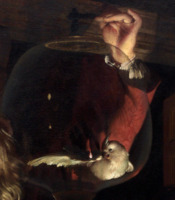
Canary
Sentinel species are used to detect risks to humans by providing advance warning of a danger. The idea of placing warm-blooded animals in a mine to detect carbon monoxide was first proposed by the Scottish physiologist John Scott Haldane in 1913. Canaries (Serinus canaria ) were considered the best sentinel animals for detection of dangerous gases because they were found to be more sensitive than other species evaluated (Pollock 2016:386-387). -
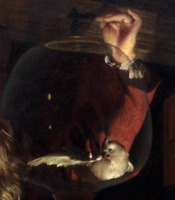
Flight
A chorus of juvenile heartbeats affected by Atrial Septal (ASD) and Ventricular Septal Defects (VSD), Patent Ductus Arteriosus(PDA), and Aortic Valve Stenosis (AVS), transposed to a higher frequency to simulate birdsong -
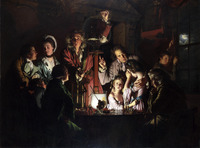
An Experiment on a Bird in the Air Pump
In Joseph Wright’s 'An Experiment on a Bird in the Air Pump' (1768), he depicts the re-enactment of Boyle’s famous experiment. Contrary to the restricted viewing of this experiment in the confines of Gresham College by the gentleman of the Royal Society, this audience includes a variety of individuals of different ages and gender, exhibiting a mixture of emotions: a young girl worriedly watches the fate of the bird, while another is comforted by her father, seemingly too upset to view the rest of the experiment; a young boy and middle-aged man look on with absorption, while two young lovers only have eyes for each other; lastly an old man meditates on a skull in a jar, and the scientist stare out at the viewer, and not at the experiment. -
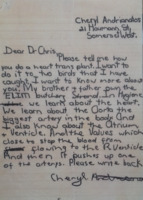
Heart of Cape Town Museum
"Dear Dr Chris, please tell me how to do a heart transplant". I want to do it to two birds that I have caught. My brother and father own the ELIM Butchery Strand. -
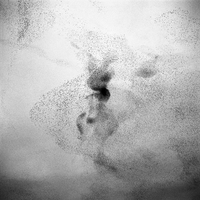
Murmeration
Heart murmurs are sounds – such as whooshing or swishing – made by turbulent blood in or near the heart. When doctors listen to a child's heart, what they usually hear is a simple rhythm: "lub-dub, lub-dub, lub-dub..." Sometimes, they'll hear an extra sound in between the lub and the dub. That extra sound is called a heart murmur. Heart murmurs can be harmless or abnormal. In the case of the latter, it is usually the result of abnormal blood flow through the heart caused by a heart valve not working properly. -
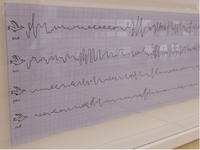
Flight
A chorus of juvenile heartbeats affected by Atrial Septal (ASD) and Ventricular Septal Defects (VSD), Patent Ductus Arteriosus(PDA), and Aortic Valve Stenosis (AVS), transposed to a higher frequency to simulate birdsong -
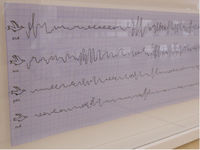
The Lost Boys
After they left Neverland, Mr and Mrs Darling adopted the Lost Boys. Before they had attended school a week they saw what goats they had been not to remain on the island; but it was too late, and they settled down to being as ordinary as “you or me or Jenkins minor” (Barrie 1989: 180). It is sad to say that the power to fly gradually left them. “At first Nana tied their feet to the bedposts so that they should not fly away in the night; and one of their diversions by day was to pretend to fall off buses; but by and by they ceased to tug at their bonds in bed, and they found that they hurt themselves when they let go of the bus. In time they could not even fly after their hats. Want of practice, they called it; but what it really meant was they no longer believed” ( Barrie 1989: 180-181). -

Museum of Natural History Oxford
On a sunny afternoon, July 4th 1862, an Oxford don took out four friends, for a rowing expedition up the Thames. The don was the Oxford mathematician, photographer and storyteller, Charles Dodgeson (better known by his pen name, Lewis Carroll) and his friends were the Rev. Robinson Duckworth and three children – Alice Liddell, aged 10, and her sisters. During the afternoon Dodgeson spun out a series of fantastic yarns incorporating friends and familiar places in Oxford, mathematical riddles, literary allusions and countless references to natural history. -

Avoided Object
Photographs of the sky above the Imperial War Museum taken with the camera that belonged to Hoess, commandant of Auschwitz -

The Swamp of Sadness
-

Big Good Strong Hands...
The 1984 film, 'The Neverending Story', features Pyornkrachzark, the Rockbiter, a large creature made of stone. The Rockbiter species are named due to their diet of rocks and earth-based materials. The Rockbiter seen in the film particularly has a liking for limestone. In the novel and the first film, the Rockbiter appears early among the messengers sent to see the Childlike Empress at the Ivory Tower during the Nothing crisis. In the first film he ultimately reappears, encountered by Atreyu. He has lost faith in himself after failing to save his travelling companions from the Nothing, and advises Atreyu to flee. -
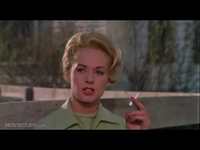
Crows on the playground (The Birds)
Melanie (Tippi Hedren) smokes as flocks of crows quietly gather on the school playground behind her. -

Compound of Tincture of Chloroform and Morphine
"Directions: For an adult, from five to ten minims may be taken in a wineglasful of water, and repeated in three to four hours, if necessary. In severe cases, the dose may be increased to fifteen minims. As this preparation contains potent posions, it should be used with caution". (As read on the lable of the bottle) "Action and Uses: In addition to its well-known use as an anaesthetic, Chloroform has been highly recommended for the relief of asthma, and in the form of vaporoles can be employed safely during the passage of calculi from the gall-bladder or kidney. The vaporoles are the most useful in obstetric practice. A vaporole may be crushed and the vapour inhaled from the palm of the hand" (BWC 1896: 38). "Morphine Sulphate: Anodyne. Use with caution. One swallowed gives great relief of pain"(BWC 1925:132).


